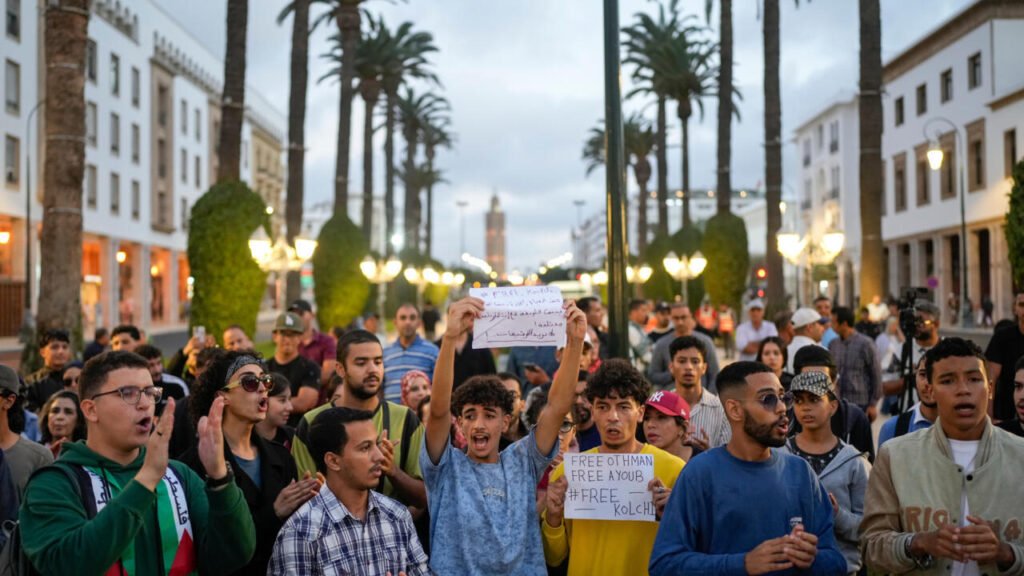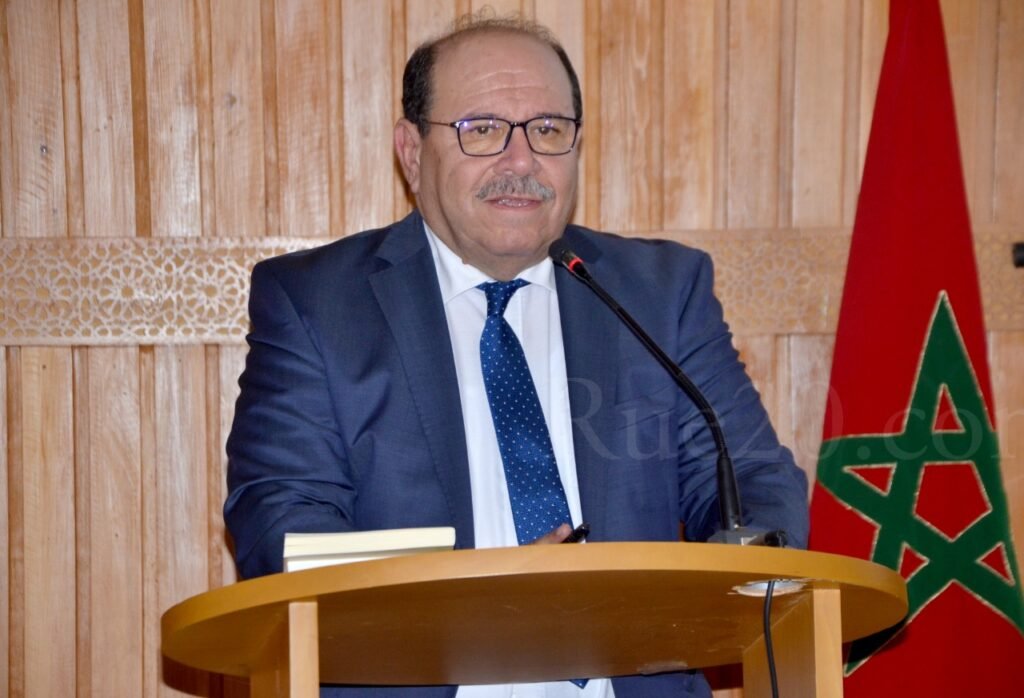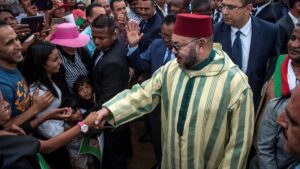Generation Z: Between National Unity and Geostrategic Ambitions

Dr. Abdullah Boussouf (Historian, Secretary-General of the Council of the Moroccan Community Abroad)
I do not like to reduce the youth of my country to mere letters, numbers, or even colors, because by doing so, I would be harming their peaceful protests to achieve just social demands as stipulated in the Moroccan constitution. I also do not like the Western media to compare the youth of my country to the youth of other countries, and to paint them with colors other than ours and descriptions other than ours.
What does it mean when certain names – some of whom have won the Nobel Peace Prize – come out of the limelight to add fuel to the fire? What does it mean when media outlets whisper in the ears of our youth, convincing them that they are “Generation Z”?
Because they are simply greater than all letters, numbers and colors. It is enough that they are the descendants of Al-Idrisi, Al-Hassan Al-Wazzan, Al-Hassan Al-Attar and many others who led the world at pivotal stages of global history. Does their bearing of this name, “Generation Z,” for example, have a magical power? And why don’t we consider the emergence of these young people a healthy interaction and maturation from within the walls of one homeland, or one of the results of the two speeds in Morocco? Or a youthful cry to change the pace of improving services in the education, health and other sectors? Why don’t we consider these protests to be an internal matter and an internal affair, and therefore we have no need for names that do not resemble us or concern us?
Let us first acknowledge the need to pay greater and stronger attention to the education and health sectors. Let us be more daring than the Western media itself and acknowledge the need to reconsider the country's health map, its policies for education and the pharmaceutical industry, and the equipment of hospitals, medical laboratories, blood transfusion centers, etc. The same applies to the education sector, thereby blocking the path of banditry in these two important sectors.
Over the past years, the Moroccan street has witnessed million-man marches on several occasions, whether those related to the Family Code, the Palestine and Gaza issue, or strikes in the health, education, and justice/law sector. This means that the culture of marches, protests, and peaceful sit-ins is not a strange or sudden event, but rather is fundamentally embedded in the core of Moroccan terminology and culture - of course, marches accompanied by violence or acts of sabotage, theft, and rioting are rejected and morally and legally unacceptable - and despite their millions of people, those mouthpieces did not bother to talk about them or comment on them!
However, within the framework of the principles of democracy and freedom of expression, we have the right to list some areas of disagreement, or to read from another angle, without aiming to justify any of the shortcomings of public policies in the areas of health, education, and employment. The young protesters on September 28 and 29 are credited with stirring up stagnant waters and calling on the government to provide strong, comprehensive answers that meet all the expectations of young people in health, education, and the fight against corruption, on the one hand, and then, the need for the government to adopt modern communication policies with the citizen/voter, based on transparency and effectiveness, and a break with the wait-and-see approach and procrastination.
Our goal in considering the youth protests as a national issue is not to diminish them, as claiming they belong to "Generation Z" would lead us to other interpretations. First, we question the timing, which coincided with Morocco's negotiations on the EU agreement, and how images of the protests spread like wildfire across European television channels and digital platforms in an attempt to distort Morocco's image abroad and thus weaken Morocco's negotiating position vis-à-vis its European partners, particularly regarding the issue of listing the source of agricultural and fisheries products. Here, we assume the youth had prior knowledge of these important negotiations, especially since they preceded a crucial political event: the issuance of the UN Security Council's recommendation on the Moroccan Sahara issue at the end of October. We were preparing to definitively close this issue by adopting the autonomy option for the Moroccan Sahara regions.
So who decides when to go out into the darkened rooms? And how are the agendas and hierarchies of youth expectations determined?
To claim to belong to the Generation Z movement means adopting all its slogans, symbols, and banners—or "tifos," in the parlance of football fans. The Generation Z tifos almost encapsulate the essence and philosophy of the youth protest movement, as they chose the logo of the Japanese manga by Eikiro Oda, which represents the pirate logo and the story of the hero Monkey D. Luffy and his dream of becoming the Pirate King. The cartoons were released in 1997, the same year designated for Generation Z. They have sold 500 million copies, with numerous translations, and were included in the Guinness Book of World Records in 2022.
The One Piece story has defined many elements of the mental makeup of Monkey D. Luffy and his friends, including indifference, lawlessness, adventure, and chaos in the name of freedom. That is why demonstrators in Paris raised it to overthrow the government of Pyro, and demonstrators in Italy, Indonesia, Paraguay, and others raised it. However, the Moroccan squares did not know how to raise this “tifo/black pirate flag.” Despite that, a strong feeling remained inside us telling us that there is something not innocent and unusual, and that the big players chose very carefully the timing and type of malfunctions, so that it received credibility on the ground and got what they wanted.
But there are many indications that the dark rooms of command are located somewhere outside the homeland. It is inconceivable that Moroccan youth protest peacefully, then burn everything, push minors into the streets, and then offer flowers in a back-and-forth with the public authorities. This coincides with delicate negotiations with the European Union and hopes of finally closing the Western Sahara issue. What is the purpose of the youth broadcasting videos in foreign languages, French, Spanish, and English? Is this a request for external support, or are they signals to the real big players? This is especially true given that we have observed significant interest from CNN, with the same encouragement, while it did not engage in the same manner with the Yellow Vest protests in France until much later. As for the Francophone channel France 24, it resorted to "marketing or advertising" to ensure wider distribution on Facebook, where the same Yemeni Nobel Peace Prize laureate holds a prominent position on a committee that ranks news related to the Arab world and decides whether to publish it!
The same can be said of the BBC and DW in their coverage of bloody protests like the one in Georgia that saw the storming of the presidential palace, yet UN Secretary-General Guterres did not bother to issue a statement of condemnation!
For all this, I believe these youth protest movements should be described as healthy community engagement. Otherwise, they represent yet another episode in the tarnishing of Morocco's image abroad by entities known for their hostile agendas toward the monarchy and its sovereign security services. They also represent a tax on sovereign choices regarding geostrategic alliances and diversification of economic partners, particularly China and Africa. Because every cloud has a silver lining, these protests may be a prelude to announcing a Moroccan cultural industry to provide a national reference point for future generations. However, before that, it is imperative to accelerate the implementation of the elements of a social state.






